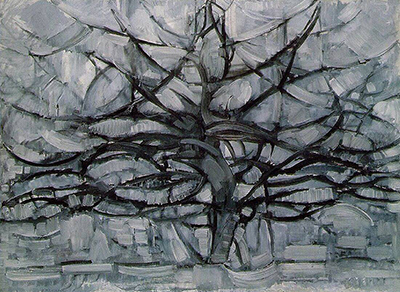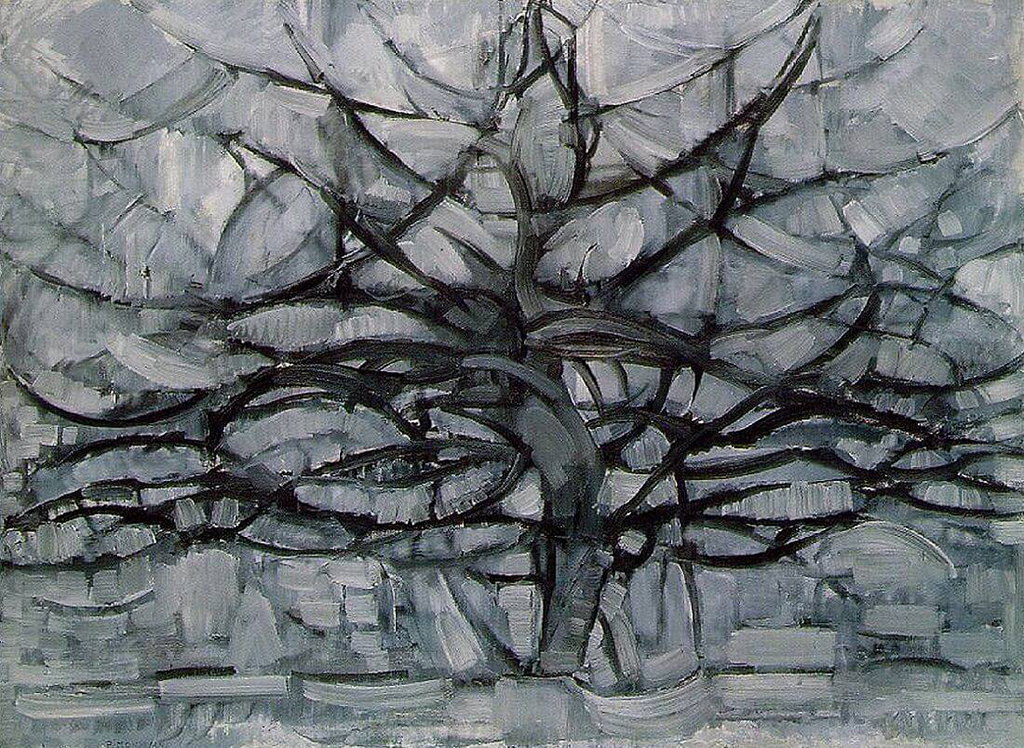Gray Tree is one of the most significant paintings by Piet Mondrian, and one of a number of memorable depictions of trees that he completed over a period of several years in the early 20th century.
It was made in 1911 on a canvas when he was beginning experimenting with cubism. This painting was one of Mondrian's first artistic work where he applies to natural subjects the principle of cubic composition. This was also a continuation of a series on the tree theme. The tree series began with the Red Tree in 1908. Although many years elapsed between the tree series images, it would be a mistake not to look at the two paintings as a single development.
For this painting, the foreground and the background intermingle with a palette that is somewhat restricted. The tree is slightly oval in shape, it follows the work of other painters such as Pablo Picasso. Mondrian's work later followed a similar painting feature, Flowering Apple Tree was a similar work of art in 1912 with a similar composition, see also Flowering Trees from the same year. The only difference is that the outline of the tree is more abstract and faceted. The three dimensional tree in the painting has been reduced to planes and lines. This is made through a limited use of greys and blacks. This painting falls in a series of works where trees are naturally represented. Later paintings have the lines of trees reduced till it is a little invisible.
These later paintings have become the secondary to the overall composition with the horizontal and vertical lines as their main representation. For this painting too, there is still the illusion about the tree since it appears more natural. A keen observer will however note Mondrian's interest in reducing the normal organization and structure of lines. The step was important in Mondrian's development in maturing his abstract style of painting. Later paintings show that he radically simplified elements in his paintings to reflect what he saw. He created a universal, aesthetic and clear language with his canvases. We can see a path to true abstraction with his series of tree paintings, with huge developments across several artworks, even across just the same year.
This artistic journey taken by Mondrian can be found in the careers of a number of other notable 20th century artists. Joan Miro, a Catalan painter and sculptor, produced large amounts of impressionist, cubist and modernist paintings before first working as an abstract artist. He would also use more detail initially, such as with The Hunter (Catalan Landscape) from 1924, before slowly reducing detail over a number of decades, giving us examples such as the Triptych Bleu I, II, III from the early 1960s, once he had refined his own visual language that could be re-used across multiple paintings, and even translated into other mediums.





